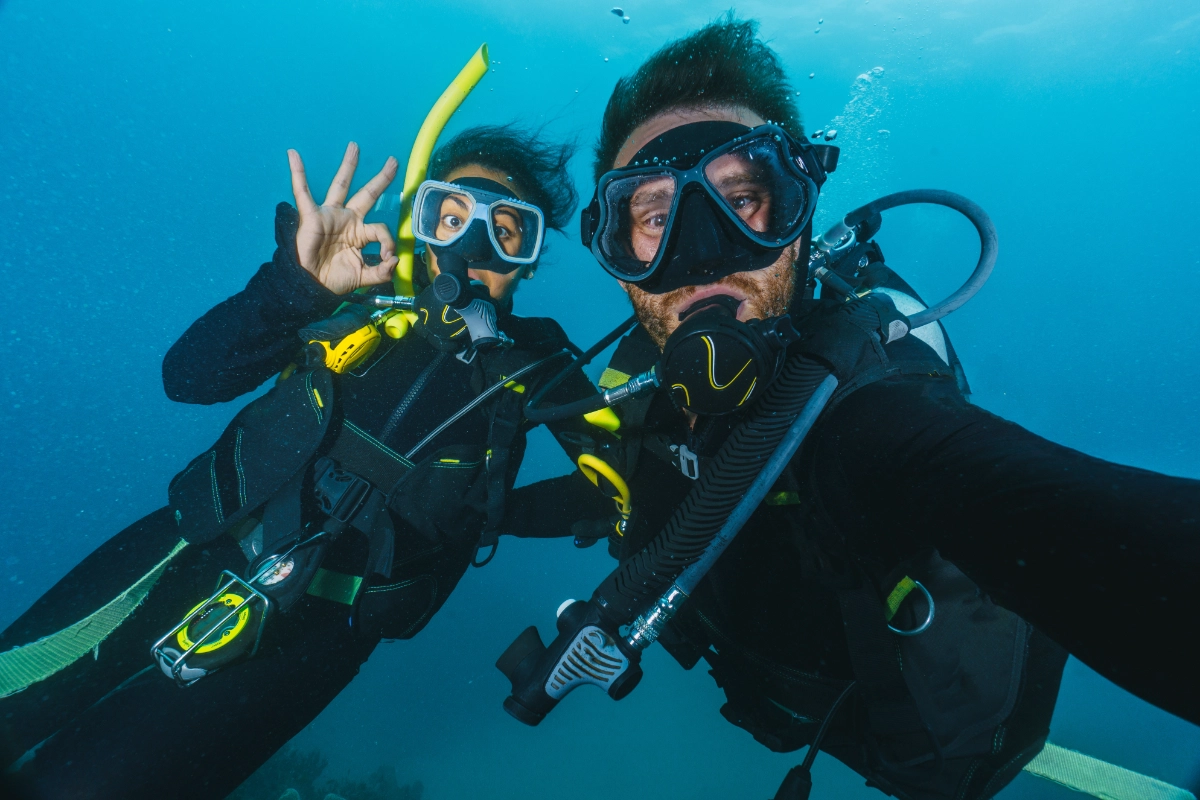Guided Diver
-
Guided Diver Introduction
-
Adapting to the Underwater World
-
Your Equipment
-
Keeping Warm Underwater
-
Communicating Underwater
-
Buoyancy
-
The Diving Environment
-
The Buddy System
-
Considerations for Diving
-
Equipment and Accessories
-
Diving Techniques
-
Guided Diver Final Exam1 Quiz
-
Before you go Diving
-
Guided Diver Training Dive 1
-
Guided Diver Training Dive 2
Adapting to the Underwater World
Adapting to the Underwater World
By the end of this lesson, you will understand:
What is the most important rule in scuba diving
- How to equalise your airspaces underwater
Breathing Underwater
You’ll soon be entering a wonderful new world and taking your first breaths underwater. So what should you expect? Just like on land, it’s important to keep breathing. In fact, that’s the most crucial rule in scuba diving.
The Most Important Rule in Scuba Diving is to keep breathing and never hold your breath.

How your airspaces are affected underwater
Water has weight, which adds to the pressure on your body. The deeper you go underwater, the greater the pressure exerted on your body. As your body is 60% water, you will feel the most significant impact of this increased pressure on your air spaces, such as your lungs, ears and sinuses.
Effects of Pressure on your airspace
When diving, changes in water pressure can impact your airspaces. As you descend, the
pressure increases and as you ascend, it decreases. This in turn affects the volume of the
airspaces in your body. The air in your airspaces will be compressed as you descend and the
pressure increases. Conversely, as you ascend and the pressure decreases, this air will expand.
How do you deal with pressure changes underwater?
As you descend underwater, you’ll need to equalise the air in your body. To do this, you simply need to remember the most important rule in scuba diving – Keep Breathing and Never Hold Your Breath
You will also need to equalise your sinuses and ears using one of the techniques below.
Method 1 - Valsalva Manoeuvre
Method 2 - Toynbee Manoeuvre
- Gently pinch your nose
- Continue pinching your nose
- Blow gently through your nose until the pressure subsides.
- Gently pinch your nose
- Continue pinching your nose and swallow until the pressure subsides
Equalising Your Airspaces
As you descend, pressure increases, making it harder for the Eustachian tubes to open and equalise the pressure between the outer and middle ear. Standard techniques for equalising include the Valsalva Manoeuvre, which involves exhaling against a closed mouth and nose, and the Toynbee Manoeuvre, which involves swallowing while holding your nose. These techniques help to open the Eustachian tubes, allowing the pressure to equalise.
